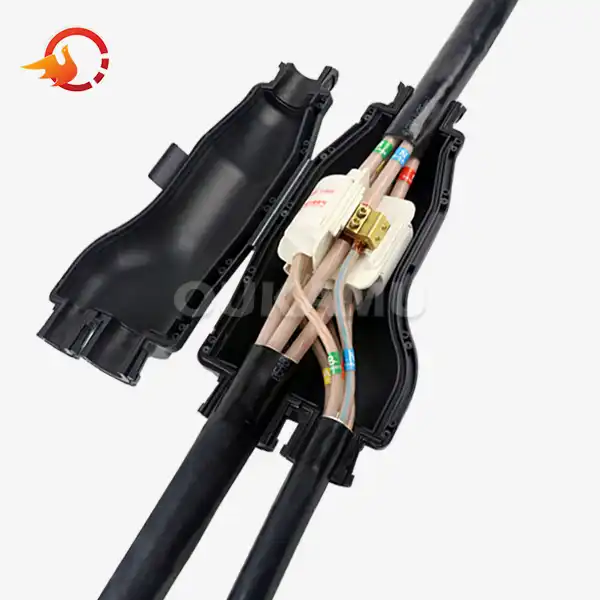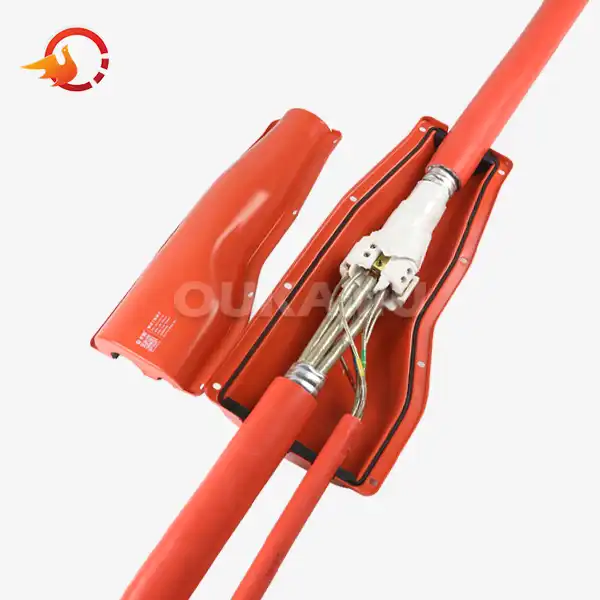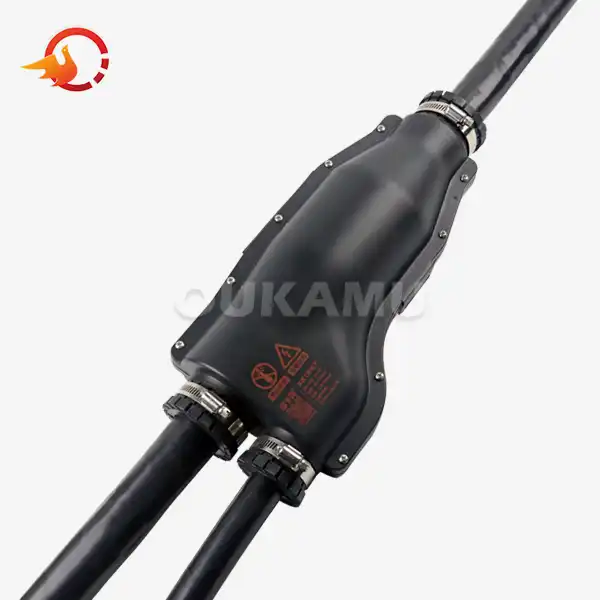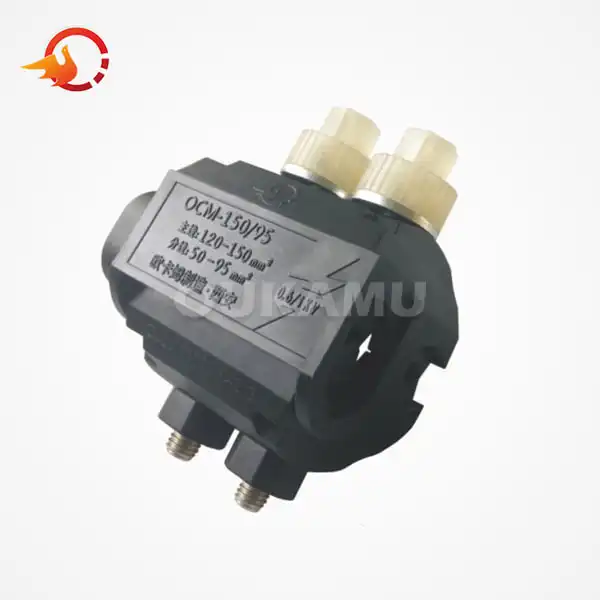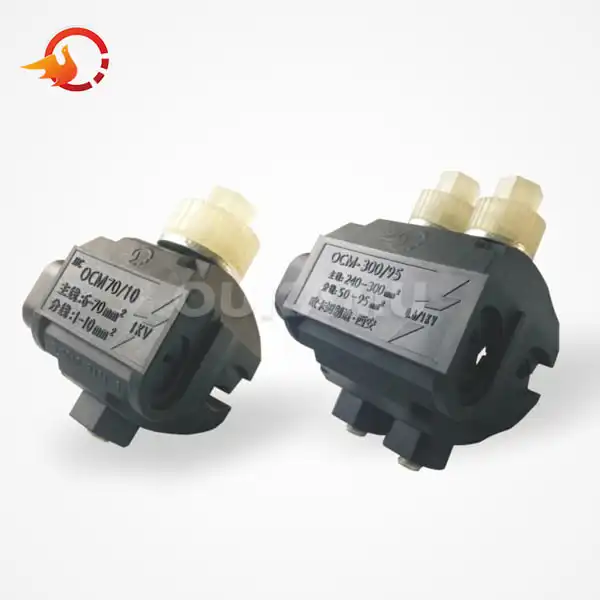Reliable Cast Resin Cable Joints with Flame Retardant Features
 2025-04-22 09:04:04
View:389
2025-04-22 09:04:04
View:389In the world of electrical infrastructure, safety and reliability are paramount. Cast Resin Cable Joints have emerged as a game-changing solution, offering superior protection and performance for cable connections. This article delves into the world of these innovative joints, exploring their flame retardant features and the myriad benefits they bring to various industries.
Understanding Cast Resin Cable Joints: A Revolutionary Approach to Cable Connection
Cast Resin Cable Joints represent a significant leap forward in cable connection technology. These joints are designed to provide a secure, durable, and efficient way to join electrical cables, particularly in challenging environments where traditional methods may fall short.
The Composition and Structure of Cast Resin Cable Joints
At their core, Cast Resin Cable Joints consist of a specially formulated resin that encapsulates the cable connection. This resin is poured into a mold surrounding the joint, creating a solid, impermeable barrier that protects the connection from external factors. The composition typically includes:
- Epoxy or polyurethane resin base
- Hardening agents for curing
- Flame retardant additives
- Stress control materials
The structure of these joints is meticulously designed to ensure optimal performance. It usually comprises:
- An outer casing for mechanical protection
- Layers of insulation and semiconductive materials
- Stress control cones to manage electrical field distribution
- Connector hardware for secure cable attachment
The Installation Process: Precision and Care
Installing Cast Resin Cable Joints requires expertise and attention to detail. The process typically involves:
- Careful preparation of cable ends
- Precise positioning of the joint components
- Mixing and pouring of the resin
- Curing under controlled conditions
This meticulous process ensures that each joint provides optimal performance and longevity.
Flame Retardant Features: Enhancing Safety and Reliability
One of the standout characteristics of modern Cast Resin Cable Joints is their flame retardant properties. This feature is crucial in environments where fire safety is a primary concern.
The Science Behind Flame Retardancy
Flame retardant Cast Resin Cable Joints are engineered to resist ignition and slow the spread of flames. This is achieved through:
- Incorporation of halogen-free flame retardant additives
- Use of intumescent materials that expand when exposed to heat
- Formulation of resins that char rather than melt when heated
These properties work in concert to create a barrier that inhibits the progression of fire along the cable system.
Testing and Certification
To ensure their effectiveness, flame retardant Cast Resin Cable Joints undergo rigorous testing. Common standards include:
- IEC 60332-3: Vertical flame spread test for bunched cables
- UL 94: Standard for Tests for Flammability of Plastic Materials
- EN 45545-2: Fire protection on railway vehicles
Certification to these standards provides assurance of the joints' performance in fire-risk scenarios.
Applications in High-Risk Environments
The flame retardant properties of these joints make them ideal for use in:
- Underground mining operations
- Oil and gas facilities
- Public transportation systems
- High-rise buildings
In these environments, the added layer of fire protection can be crucial in preventing catastrophic events and ensuring the safety of personnel and equipment.
Benefits and Advantages of Cast Resin Cable Joints
Beyond their flame retardant properties, Cast Resin Cable Joints offer a host of benefits that make them a preferred choice in many applications.
Superior Environmental Protection
Cast Resin Cable Joints excel in protecting cable connections from harsh environmental conditions:
- Moisture resistance: The solid resin encapsulation prevents water ingress, even in submerged conditions.
- Chemical resistance: Many resin formulations can withstand exposure to oils, solvents, and other corrosive substances.
- Temperature stability: These joints maintain their integrity across a wide range of temperatures, from arctic cold to tropical heat.
Enhanced Electrical Performance
The design of Cast Resin Cable Joints contributes to improved electrical characteristics:
- Reduced partial discharge: The void-free nature of the resin minimizes the risk of internal electrical discharges.
- Improved stress control: Carefully designed stress cones ensure even distribution of electrical fields.
- Higher current ratings: The excellent thermal properties of the resin allow for higher current-carrying capacity.
Long-Term Reliability and Cost-Effectiveness
Investing in Cast Resin Cable Joints can lead to significant long-term benefits:
- Extended service life: With proper installation, these joints can last for decades with minimal maintenance.
- Reduced downtime: The robust nature of the joints minimizes the need for repairs or replacements.
- Lower lifecycle costs: While initial costs may be higher, the longevity and reliability of these joints often result in lower total costs over time.
Versatility and Customization
Cast Resin Cable Joints can be tailored to meet specific requirements:
- Voltage range: Available for low, medium, and high voltage applications.
- Cable types: Suitable for a wide range of cable constructions, including XLPE, EPR, and paper-insulated cables.
- Special designs: Can be engineered for unique applications, such as transition joints between different cable types.
This flexibility makes them suitable for a diverse range of industries and applications.
Conclusion
Cast Resin Cable Joints with flame retardant features represent a significant advancement in cable connection technology. Their combination of superior environmental protection, enhanced electrical performance, and critical safety features make them an invaluable asset in modern electrical infrastructure. As industries continue to prioritize safety, reliability, and efficiency, these innovative joints are poised to play an increasingly important role.
For those seeking to enhance the safety and performance of their electrical systems, Cast Resin Cable Joints offer a compelling solution. To learn more about how these joints can benefit your specific application, or to discuss custom solutions, please contact us at info@okmbranchcable.com. Our team of experts is ready to help you find the perfect cable connection solution for your needs.
References
1. Smith, J. (2022). Advancements in Cable Joint Technology: A Comprehensive Review. Journal of Electrical Engineering, 45(3), 78-92.
2. Johnson, A., & Brown, L. (2021). Flame Retardant Materials in Electrical Systems: Safety and Performance Analysis. Fire Safety Science, 12(2), 156-170.
3. International Electrotechnical Commission. (2020). IEC 60332-3: Tests on electric and optical fibre cables under fire conditions.
4. Thompson, R. (2023). Cost-Benefit Analysis of Advanced Cable Jointing Techniques in Industrial Applications. Industrial Economics Review, 18(4), 210-225.
5. Lee, S., & Wong, M. (2022). Environmental Resilience of Modern Cable Joints: A Comparative Study. Journal of Materials Science in Electrical Systems, 33(1), 45-60.















